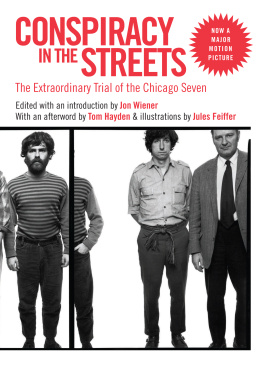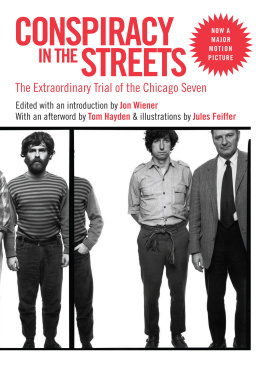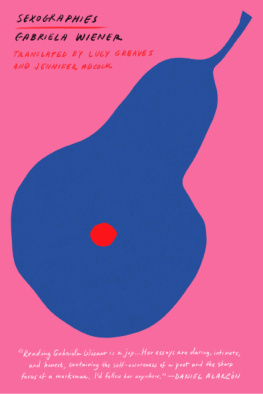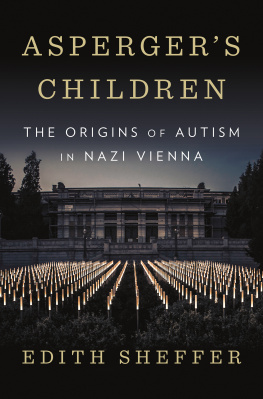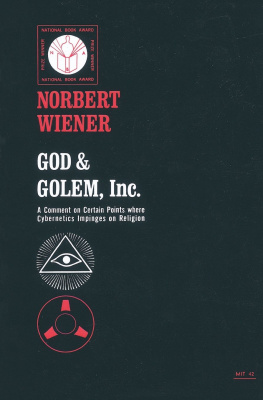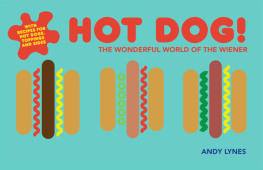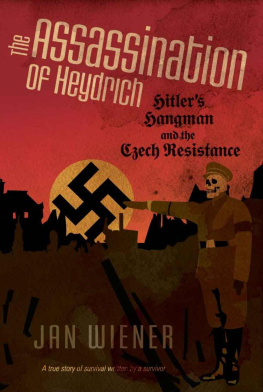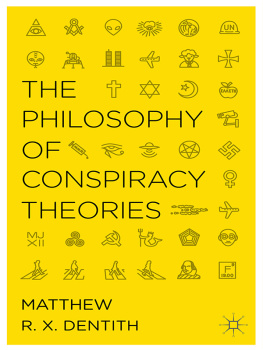Jon Wiener (editor) - Conspiracy in the Streets
Here you can read online Jon Wiener (editor) - Conspiracy in the Streets full text of the book (entire story) in english for free. Download pdf and epub, get meaning, cover and reviews about this ebook. year: 2006, publisher: The New Press, genre: Politics. Description of the work, (preface) as well as reviews are available. Best literature library LitArk.com created for fans of good reading and offers a wide selection of genres:
Romance novel
Science fiction
Adventure
Detective
Science
History
Home and family
Prose
Art
Politics
Computer
Non-fiction
Religion
Business
Children
Humor
Choose a favorite category and find really read worthwhile books. Enjoy immersion in the world of imagination, feel the emotions of the characters or learn something new for yourself, make an fascinating discovery.
- Book:Conspiracy in the Streets
- Author:
- Publisher:The New Press
- Genre:
- Year:2006
- Rating:4 / 5
- Favourites:Add to favourites
- Your mark:
- 80
- 1
- 2
- 3
- 4
- 5
Conspiracy in the Streets: summary, description and annotation
We offer to read an annotation, description, summary or preface (depends on what the author of the book "Conspiracy in the Streets" wrote himself). If you haven't found the necessary information about the book — write in the comments, we will try to find it.
Conspiracy in the Streets — read online for free the complete book (whole text) full work
Below is the text of the book, divided by pages. System saving the place of the last page read, allows you to conveniently read the book "Conspiracy in the Streets" online for free, without having to search again every time where you left off. Put a bookmark, and you can go to the page where you finished reading at any time.
Font size:
Interval:
Bookmark:

OPENING AT THE END OF 1969a politically charged year at the beginning of Nixons presidency and at the height of the anti-war movementthe Trial of the Chicago Seven (which started out as the Chicago Eight) brought together Yippies, antiwar activists, and Black Panthers to face conspiracy charges following massive protests at the 1968 Democratic National Convention in Chicago, protests which continue to have remarkable contemporary resonance.
The defendantsRennie Davis, Dave Dellinger, John Froines, Tom Hayden, Abbie Hoffman, Jerry Rubin, Bobby Seale (the co-founder of the Black Panther Party who was ultimately removed from the trial, making it seven and not eight who were on trial), and Lee Weineropenly lampooned the proceedings, blowing kisses to the jury, wearing their own judicial robes, and bringing a Viet Cong flag into the courtroom. Eventually the judge ordered Seale to be bound and gagged for insisting on representing himself. Adding to the theater in the courtroom an array of celebrity witnesses appeared, among them Timothy Leary, Norman Mailer, Arlo Guthrie, Judy Collins, and Allen Ginsberg (who provoked the prosecution by chanting Om on the witness stand).
This book combines an abridged transcript of the trial with astute commentary by historian and journalist Jon Wiener, and brings to vivid life an extraordinary event which, like Woodstock, came to epitomize the late 1960s and the cause for free speech and the right to protestcauses that are very much alive a half century later. As Wiener writes, At the end of the sixties, it seemed that all the conflicts in America were distilled and then acted out in the courtroom of the Chicago Conspiracy trial.
An afterword by the late Tom Hayden examines the trials ongoing relevance, and drawings by Jules Feiffer help re-create the electrifying atmosphere of the courtroom.
Also by Jon Wiener
Historians in Trouble:
Plagiarism, Fraud, and Politics in the Ivory Tower
Gimme Some Truth:
The John Lennon FBI Files
Professors, Politics, and Pop
Come Together: John Lennon in His Time
Social Origins of the New South
Set the Night on Fire: L.A. in the Sixties (with Mike Davis)
CONSPIRACY
IN THE STREETS
The Extraordinary Trial
of the Chicago Seven
Edited with an introduction
by Jon Wiener

The Conspiracy in the streets needs: freedom, actors, peace, turf, money, sunshine, musicians, instruments, people, props, cars, air, water, costumes, sound equipment, love, guns, freaks, friends, anarchy, Huey free, a truck, airplanes, power, glory, old clothes, space, truth, Nero, paint, paint, help, rope, swimming hole, ice cream, dope, nookie, moonship, Om, lords, health, no hassles, land, pigs, time, patriots, spacesuits, a Buick, peoples justice, Eldridge, lumber, panthers, real things, good times.
from a pamphlet distributed the week
before the Chicago Eight trial
Contents
by Jules Feiffer
List of Illustrations
by Jules Feiffer
Acknowledgments
T his book was Colin Robinsons idea. He was wonderfully enthusiastic and effective in recruiting all the contributors and bringing the parts together. He got Jules Feiffer to let us use his drawings, and he got the Richard Avedon cover photo.
Tom Hayden read every word of both the edited trial transcript and the introductionit was great to have a chance to work with him. Eric Foner provided encouragement at a crucial stage. Judy Fiskin provided astute and helpful comments and editing on many versions of the editors introduction.
Turning a 22,000-page trial transcript into a 304-page book wasnt easy. Thanks to Adam Shatz, who edited a preliminary version of the trial transcript (before he became the literary editor of The Nation). We relied in part on the version of the trial transcript published in 1970 and edited by Judy Clavirnow Judy Albertand John Spitzer, and were grateful for their cooperation. The hardest work was done by Eileen Luhr, who checked our manuscript against the original trial transcript on microfilm and improved the final product in countless ways. Jules Feiffer generously provided the drawings he made at the time in the courtroom, and the estate of Richard Avedon allowed us use the gorgeous photo on the cover.
Laura Cadra, reference librarian at the Law Library at UCLA, provided the many reels of microfilm of the trial transcript and let us check them out. We also got help from Dean Rowan, reference librarian at the Boalt Hall Law Library at UC Berkeley. Dean Blobaum at the University of Chicago Press allowed us to publish a version of the magnificent Chicago Eight chronology on his website. We are grateful to the Humanities Center at UCI for a grant for manuscript preparation.
At The New Press, Sarah Fan did a terrific job managing the different parts of the book, and we had a great copy editor in Stuart Calderwood. Lizzie Seidlin-Bernstein solved many problems along the way.
Abbie and Jerry and Dave Dellinger are gone now, and so is Bill Kunstlerwith this book we remember them.
Jon Wiener
Los Angeles
January 2006
Editors Note
T his is not a scholarly edition. The original trial transcript is 22,000 pages long; in cutting it down to 193 pages, we tried to select not only the most historically significant passages, but also some of the most dramatic confrontations and most amazing moments, in an effort to convey to readers the nowlegendary aspects of the trial. We edited also to preserve some of the sheer human interestthe striking personalities and rhetorical styles of the central figures. Nevertheless, a lot is missing from the printed page, as law professor Harvey Kalven suggested: the tone, the loudness, the sarcasm, the demeanor, the murmuring, and the degree of disturbance in the courtroom. That is left for the reader to imagine.
In the interests of readability, we eliminated ellipses. Reading any trial transcript can be hard work; also in the interests of readability, The Court as a speaker has been changed to Judge Hoffman, Mr. Hoffman has been changed to Abbie Hoffman, and all the other speakers have been identified by first and last names, instead of Mr. or Miss, as they are in the original.
In producing this volume, we relied in part on the 600-page abridgment of the trial transcript published in 1970 by Bobbs-Merrill under the title The Conspiracy Trial, edited by Judy Clavir (now Judy Albert) and John Spitzer. We gratefully acknowledge their work and thank them for permission to make use of it. Readers interested in a fuller transcript should consult their volume, now out of print but widely available at libraries and used bookstores.
Those interested in the full version of the original 22,000-page transcript can find it on microfilm at law libraries at UCLA, NYU, and other places.
Jon Wiener
CONSPIRACY IN THE STREETS
Introduction
The Sixties on Trial
Jon Wiener
A t the end of the sixties, it seemed that all the conflicts in America were distilled and then acted out in the courtroom of the Chicago Conspiracy trial. The trial focused on the demonstrations in Chicago in August 1968, where some 10,000 young people came to demonstrate outside the Democratic National Convention against the Vietnam War, to confront the war-makers in the name of the people. They were met by a similar number of policemen, National Guardsmen, and soldiers. The resulting battles, broadcast on national TV to an audience of millions, marked a crisis in the nations political and cultural order. Eight months later, federal prosecutors indicted eight leaders and charged them with conspiracy and incitement to riot. The trial, which dominated the news for months, pushed the country to decide what they thought about the passions and commitments of the antiwar movement, and about the tactics and arguments of the defenders of the status quo.
Next pageFont size:
Interval:
Bookmark:
Similar books «Conspiracy in the Streets»
Look at similar books to Conspiracy in the Streets. We have selected literature similar in name and meaning in the hope of providing readers with more options to find new, interesting, not yet read works.
Discussion, reviews of the book Conspiracy in the Streets and just readers' own opinions. Leave your comments, write what you think about the work, its meaning or the main characters. Specify what exactly you liked and what you didn't like, and why you think so.

